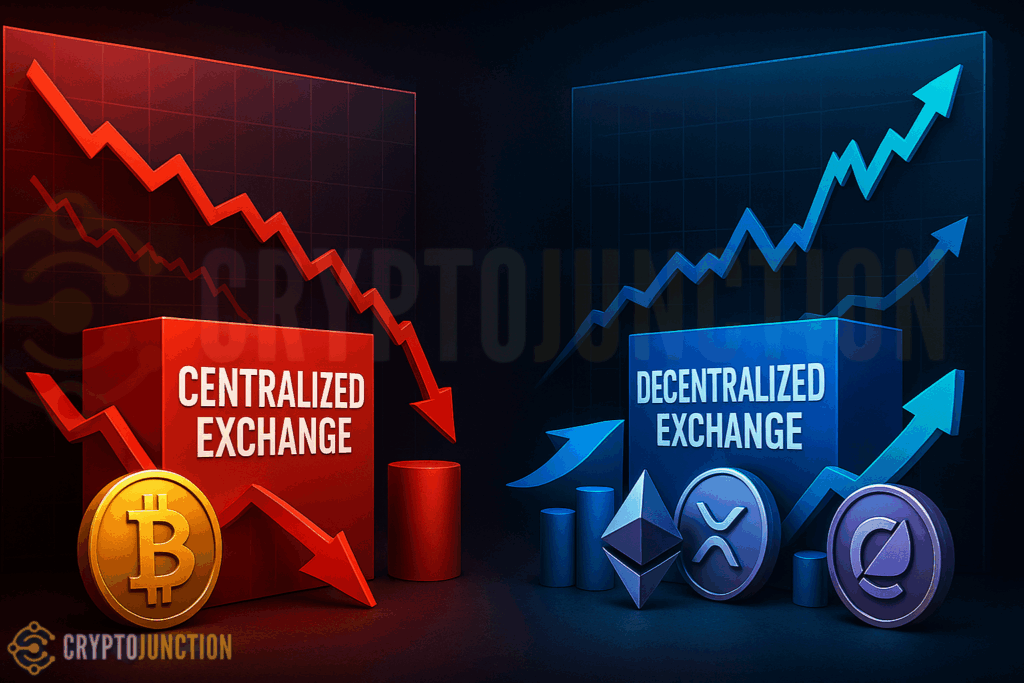In 2025 spot volume at the exchange center dropped to $1.07 trillion in June which is a 27% drop from May’s $1.47 trillion. That is the lowest since September 2024 and also a drop of 63.6% from the December 2024 high of $2.94 trillion. During this time DEXs had made a big gain in market share which saw them capture 29% of the spot market and 8% of the futures trade, while centralized exchange spot volume witnessed significant declines.
This issue is of a large scale shift in what crypto assets people are into. DEXs are out of the niche, they are head to head with the big centralized players on issues of liquidity, speed, and user autonomy, overshadowing centralized exchange spot volume.
Reflects Market Trend
In large part for the drop in volume is retail exit. Bitcoin did well supported by institutional ETF inflows which saw $2.9 billion in late June into the picture but for the alternative coins saw great drops. Retail interest has waned, with Ethereum and other altcoins still at 40% below.
Major ETFs which include BlackRock’s IBIT and Fidelity’s FBTC saw single day inflows of $163.7M and $32.9M respectively, which in turn is a sign of institutional adoption of Bitcoin. Corporate treasury buys into Bitcoin like MicroStrategy which is on a latest buying spree this is taking liquidity out of alt coins markets and increasing Bitcoin’s dominance which is now at 64%, affecting centralized exchange spot volumes.
Centralized exchanges are also in an environment of increasing regulation. The IRS’ 2025 report rules are pushing traders into DEXs for privacy and control. In turn centralized platforms lose volume, especially that of speculative assets, further impacting centralized exchange spot volume.
Centralized Exchange Spot Volume Dwarfed by DEX Gains
In June DEXs saw $390 billion in volume which was a record high for them in relation to centralized counterparts, illustrating a shift from centralized exchange spot volume. As for platforms which did very well Hyperliquid and APX Finance had great performance, Hyperliquid processing $210 billion and at 75% of the DEX futures space.
User migration is not just about ideology; it is about what motivates people. Airdrop hunters and liquidity farmers are large players in DEX activity. This migration causes a decrease in centralised exchange spot volume, as points programs, token distribution strategies, and liquidity mining are what bring in and keep strategic repeat users.
Technically seeing growth in Layer-2 solutions, reduced slippage, and improved user experience have transformed DEXs into CEX competitors. Traders are shifting to security, speed, and self custody, which are the benefits of the decentralized model. Consequently, centralized exchange spot volume is influenced by these factors.

